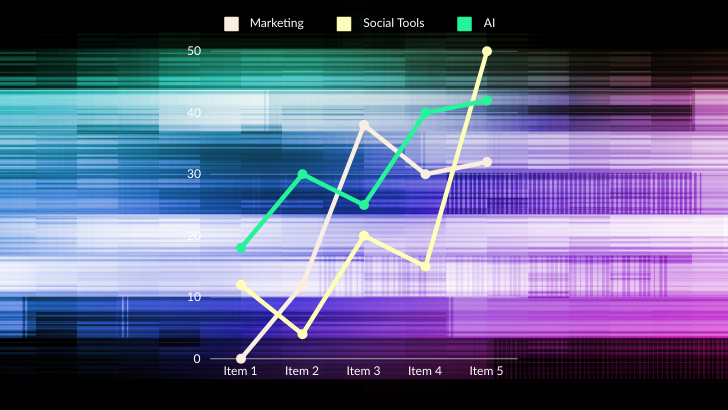It’s hard to believe, but we’re already at the mid-point of the year. And 2021 is shaping up to be another fascinating year for the healthcare industry.
With COVID-19 vaccination rates on the rise and things beginning to open up, we thought it would be an exciting time to examine the emerging trends that have defined the first half of the year.
Here are the top 10 trends we’re seeing thus far this year:
Trend 1: Decline in flu cases
In 2020, fears of a “twindemic” – aka a dual spike in COVID-19 cases coupled with a severe flu season – abounded. Luckily, those fears never materialized.
According to data from our medical claims database, the 2020-2021 flu season had just 3.4% of the volume of the 2019-2020 flu season. Typically, we see around five million flu diagnoses in a given flu season but had just over 200,000 diagnoses this year.
Social distancing, mask wearing, and an active flu vaccination campaign likely contributed to the drastic decrease in cases.
Trend 2: The resumption of delayed care
As we explored previously, COVID-19 forced millions of patients to postpone care. These delays in care are leading to exacerbated symptoms and worse healthcare outcomes for patients.
However, there is some good news – patient volume appears to have rebounded.
When we look at procedure claims for screenings for malignant neoplasms (i.e., cancerous tumors), claims volume for the last four months of 2020 was at or about 100% of the 2019 volume for the same period. And in March 2021, claims volume was 103% of the March 2019 volumes, indicating more patients are returning to seek screenings for postponed care.
Our claims data indicates a similar trend when it comes to diabetes screenings. According to our claims data, encounters for diabetes screenings from September-December 2020 were more than 100% of 2019 volumes during the same period. Volumes for February and March 2021 also surpassed 100% of the 2019 volume.
We’ll be keeping a closer eye on this trend in the second half of 2021 to see how volumes rebound as more of the population becomes vaccinated.
Trend 3: The decline in birth rates
One of the more surprising trends to emerge recently is the decline in the U.S. birth rate. According to data from our medical claims database, diagnoses claims for pregnancy are down 145% from 2016 to 2020.
The decline in birth rates, however, cannot entirely be blamed on the COVID-19 pandemic. Our data indicates that procedure claims for pregnancy have been declining since 2018. This appears to be a much larger trend with multiple factors coming into play.
It will be interesting to keep an eye on if birth rates will continue to decline or rebound in the coming years.
Trend 4: An increase in mental health utilization
COVID-19 placed enormous stress on so many people. A year of social isolation, economic hardships, and uncertainty led to an increase in mental health disorders such as anxiety and depression. According to our claims data, anxiety diagnoses were up nearly 12% and depression up over 4% in 2020.
Not only have we seen an increase in the diagnoses for anxiety and depression, but diagnoses for reaction to severe stress and adjustment disorders were up 13% from 2019 to 2020. Despite this, overall claims for mental health-related drug classes appear to have decreased from 2019 to 2020.
It’s not surprising that a once-in-a-lifetime global pandemic impacted the mental health of so many people. But, as we come off the heels of Mental Health Awareness Month, it’s reassuring to see people seeking care, especially considering how long society stigmatized people with mental health disorders.
Trend 5: The shift in care locations
Another interesting shift we are seeing is where patients are seeking out care. COVID-19 doesn’t appear to be entirely to blame for this. Healthcare was already trying to move certain types of care outside the hospital’s four walls when the pandemic hit.
We’ve seen a slow but steady decline in hospitals‘ share of total diagnosis and procedure claims since 2016. On the flip side, we’ve seen the share of total claims for physician groups increase during that same timeframe.
Medical claims data also indicated an increase in the number of procedures and diagnoses at hospice facilities, and an increase in diagnosis claims at home health agencies.
Trend 6: The rise of telehealth
Related to the shift in care locations, COVID-19 spurred the astronomical growth of telehealth services. Between March 2020 through April 2021, telehealth procedure claims have continued to average over 5,000% of 2019 volumes.
Now, as things begin to reopen, all eyes turn to the future of telehealth and its potential legacy. As of now, the weekly telehealth visit volume has only dropped slightly – down to 1.48 million in 2021 through April compared to a weekly average of 1.49 million in 2020.
Healthcare software and IT companies will want to keep a close eye on where demand for telemedicine stays steady and where it drops off to identify opportunities for their virtual care solutions.
Trend 7: The rise of remote patient monitoring
Remote patient monitoring (RPM) also became a necessity during the pandemic. By leveraging RPM tools, providers could safely monitor patients with chronic conditions and treat patients at home to limit their exposure to COVID-19 and not overwhelm the health system.
When looking at procedure claims data for RPM, we saw an increase of over 450% compared to 2019 and 2020. Much like with telehealth, it will be interesting to see if RPM continues to keep up its volume and gain popularity post-pandemic.
Trend 8: Provider burnout and staffing
COVID-19 placed considerable strain on healthcare providers, nurses, and caregivers and exacerbated issues with burnout. According to a survey on provider burnout conducted by Medscape, 42% of providers say they are experiencing burnout – and that number jumps up to over 50% when you look at certain specialties like critical care physicians or by gender.
One factor that contributes to physician burnout is feeling overworked. According to Definitive Healthcare’s physician data, physical medicine and rehabilitation providers, hospitalists, and internal medicine providers had the highest inpatient workloads in 2019 and 2020 based on providers’ average number of claims across specialties. Meanwhile, oncologists and hematologists ranked the highest for outpatient claims per physician for the last three years.
With insight on which specialties have the most demand, hospitals can make better hiring decisions to alleviate burnout and lessen providers’ workloads.
Trend 9: An increase in elective surgeries
After a pause on elective surgeries at the beginning of the pandemic, the volume appears to be returning as COVID-19 rates drop and vaccination rates increase.
According to data from our medical claim database, volume for knee replacements, hip replacements, and bariatric surgeries have begun to start to return normal volume. In fact, in March 2021 procedure volumes for these three surgeries exceeded March 2019 volumes.
However, we know demand has built up over the many months of the pandemic. Providers will need to work above capacity to meet pent-up demand while balancing the new patients who also need these elective procedures.
Trend 10: The impact of COVID-19 on obesity
Feel like you put on the “quarantine 15” during the COVID-19 lockdowns? You’re not alone. In fact, a recent survey from the American Psychological Association found that 61% of adults reported experiencing undesired weight changes since the start of the pandemic.
Medical claims data shows that obesity rates have slowly started to climb in 2021 as well. When looking at data from Q1 2021, there were an average of 2.12 million overweight and obesity diagnoses claims a month, up from an average of 1.98 million in 2020 and 2.06 million a month in 2019.
As obesity diagnoses have gone up, we’re seeing a similar pattern for patients seeking medical nutrition therapy and behavioral counseling for obesity. Average monthly procedure claims from January through March 2021 are up over 2% compared to 2019.
Weight gain is totally understandable given the stress from the pandemic and changes the lockdowns wrought on our lifestyles and activity levels.
___
This post was originally published on the Definitive Healthcare blog.



